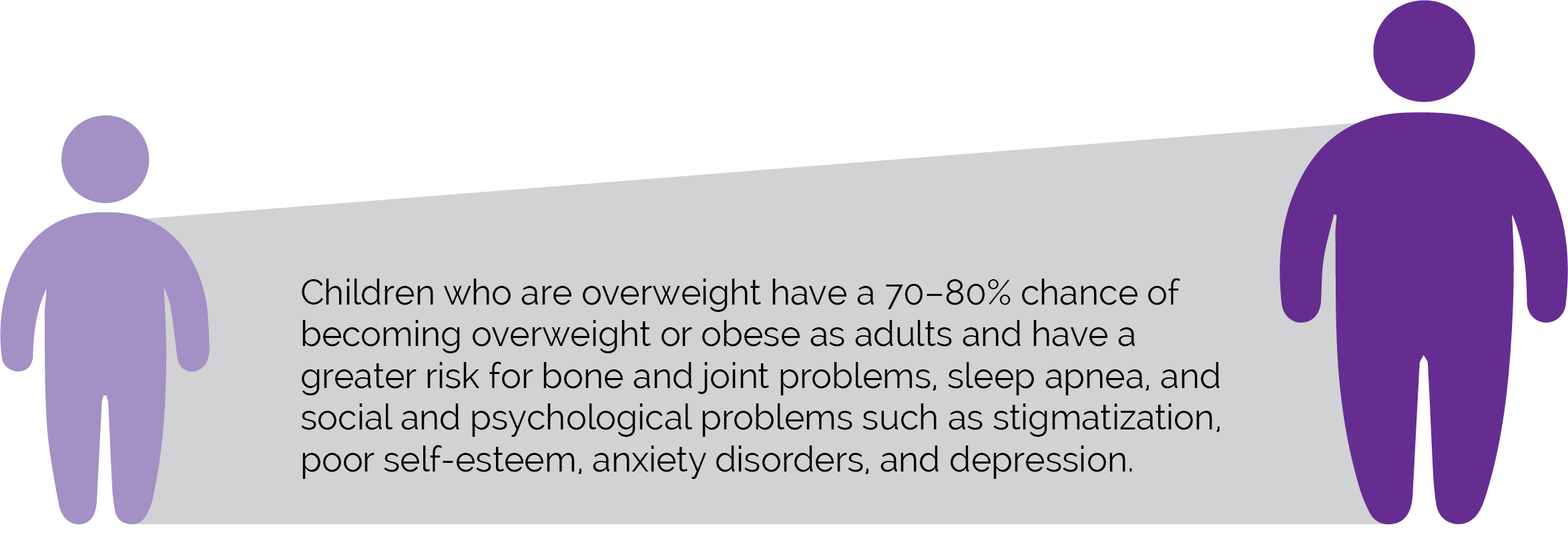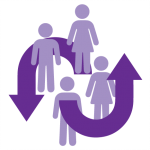Research shows that kids benefit from physical activity
National experts recommend that elementary-age children get 60 minutes or more of moderate-to-vigorous physical activity each day. Yet, research shows that children are failing to reach even minimal benchmarks for age appropriate physical activity.

Here’s why this matters
Since 1980, obesity rates for children have tripled. According to the Centers for Disease Control and Prevention website, the percentage of children aged 6–11 years in the United States who were obese increased from 7% in 1980 to nearly 18% in 2010. Similarly, the percentage of adolescents aged 12–19 years who were obese increased from 5% to 18% over the same period. Furthermore, data from 2015-2016 show that nearly 1 in 5 school age children and young people (6 to 19 years) in the United States has obesity.
The US Surgeon General has identified obesity (see definition below) as one of the greatest health problems facing the nation today, according to the Center for Disease Control, and has both immediate and long-term effects on child physical and emotional health. It lists the two greatest influences in childhood obesity as high calorie, poor quality diets and inadequate physical activity.
For the first time in generations, children are expected to live shorter lives than their parents due to the health dangers related to obesity. Inactivity, combined with poor nutrition, may be lowering the quality of physical health and life expectancy for a generation of children.
Children with higher Body Mass Index (see definition below) have greater difficulty in school adjustment. They have poorer academic achievement, greater susceptibility to bullying and teasing across genders, and more externalizing behavior by girls, greater peer rejection by non-overweight peers, and poorer cognitive functioning compared to normal weight school youth.

Obesity-related diseases previously diagnosed in adulthood are showing up in children, specifically Type II diabetes, glucose intolerance, high blood pressure, and cardiovascular abnormalities that lead to heart disease. Overweight and obesity are associated with increased risk for many types of cancer, including cancers of the breast, colon, endometrium, esophagus, kidney, pancreas, gall bladder, thyroid, ovary, cervix, and prostate, as well as multiple myeloma and Hodgkin’s lymphoma.

Poor Academic Achievement

Lower Self-Esteem

Bone and Joint Issues

Heart Disease

Cancer
What do we know about the effects of physical activity for kids?
We know plenty, and the truth is that significant scientific data on the health of children shows that physical activity delivers an array of benefits to kids.
 |
The Center for Disease Control and Prevention has prescribed both of these activities for better health in children. Here at Healthy Moves, we offer specific benefits to kids through our programs that take on physical activity as a predominate method for supporting kids in school. PE supports healthy social, cognitive, and physical development in children. |
|---|
 |
Another critical aspect to reversing obesity in America is supporting communities that promote healthy food and physical activity. That is why our organization sponsors and participates in local social activities for kids and families in which to engage in a broader health conscious context. Events like Sunday Streets or the Eugene Parade bring people together to support each other. |
|---|
 |
And finally, schools play a particularly critical role by establishing a safe and supportive environment with policies and practices that support healthy behaviors. Schools also provide opportunities for students to learn about and practice healthy eating and physical activity, another reason to engage students with PE at an early, developmental stage |
|---|
Healthy Moves offers benefits to schools and students in promoting child physical activity in the following ways:
- Teachers and students learn a standard warm up and cool down exercise that can be done consistently in all PE classrooms.
- Teachers and students are exposed to activities designed by professional trainers that may add procedural and instructional diversity to future PE classes.
- Students benefit by experiencing new ideas for activities, exposure to a professional PE advocate, and encouragement to gain strength, flexibility, coordination and endurance in their daily lives.
- School districts gain greater visibility for their commitment to PE instruction with teachers, students and parents.
